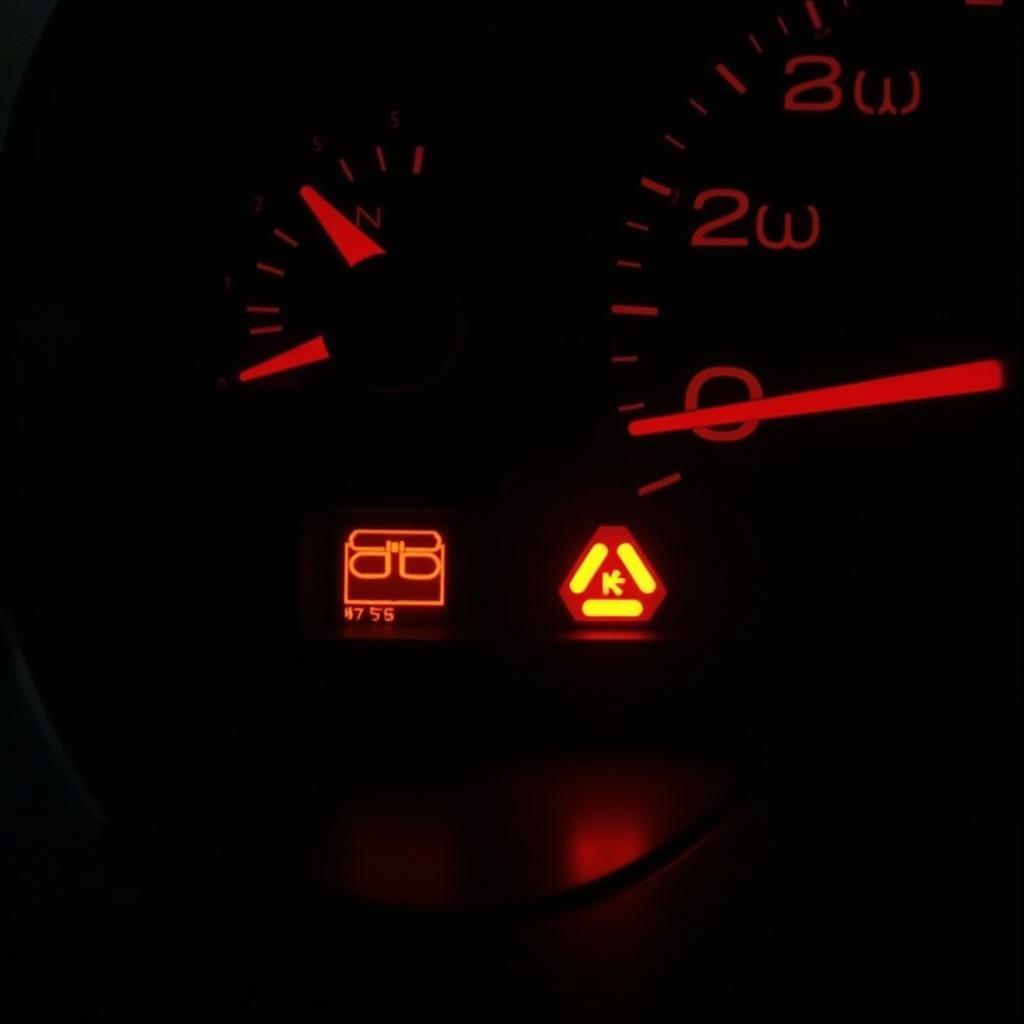The brake warning light on your Lexus ES300 is designed to grab your attention. It signals a potential issue within your braking system and should never be ignored. While it can be alarming to see it illuminated, don’t panic! This article will guide you through the common causes, how to diagnose the problem, and potential solutions.
Understanding Your Lexus ES300 Brake System
Before diving into troubleshooting, it’s helpful to understand the basics of your ES300’s braking system. This system is a critical safety feature that relies on hydraulic pressure to stop your car. When you press the brake pedal, you’re engaging a series of components:
- Brake Pedal: This activates the master cylinder.
- Master Cylinder: A hydraulic pump that builds pressure to transmit force.
- Brake Lines: These carry brake fluid under pressure to each wheel.
- Brake Calipers: These house the brake pads and pistons.
- Brake Pads: Friction material that clamps down on the brake rotors.
- Brake Rotors: Metal discs that rotate with the wheels.
When the brake pads clamp on the rotors, friction occurs, converting your car’s kinetic energy into heat and slowing it down.
Common Reasons for a Lexus ES300 Brake Warning Light
Here are the most common culprits behind a glowing brake warning light:
- Low Brake Fluid: The most frequent cause. A leak in the system or worn brake pads can result in low fluid levels.
- Worn Brake Pads: Brake pads have wear indicators that make a distinctive squealing noise. Ignoring this can lead to further damage and eventually illuminate the warning light.
- Faulty Brake Light Switch: This switch is located behind the brake pedal and signals the brake lights to activate. A malfunction can cause the warning light to turn on.
- ABS (Anti-lock Brake System) Issue: If there’s a problem with your ES300’s ABS system, the warning light might illuminate.
- Faulty Master Cylinder: A leaking or malfunctioning master cylinder can prevent proper hydraulic pressure buildup.
Diagnosing the Problem: What to Do When the Light Turns On
1. Check Your Brake Fluid Level:
- Safety First: Park on a level surface and engage the parking brake. Allow the engine to cool.
- Locate the Reservoir: Find the brake fluid reservoir under the hood. It’s usually a translucent plastic container with a black cap.
- Inspect the Fluid: The fluid should be clear and fall between the minimum and maximum lines.
2. Listen for Unusual Sounds:
- Squealing or Grinding: Worn brake pads often make these noises when you apply the brakes.
3. Check Your Brake Lights:
- Enlist a Helper: Have someone press the brake pedal while you check if both brake lights are working.
4. Consider Remote Diagnostics:
- Modern Solutions: Advanced remote diagnostic tools can connect to your ES300’s onboard computer system to pinpoint the issue.
"Remote diagnostics are transforming the way we approach car repairs," says automotive engineer, Sarah Chen. "These tools provide a precise reading of your vehicle's systems, often identifying problems that visual inspections might miss."5. Seek Professional Help:
- When in Doubt: If you’re uncomfortable diagnosing the issue yourself, or if the problem persists, it’s crucial to take your ES300 to a qualified mechanic or dealership.
Addressing Common Brake Warning Light Causes
Low Brake Fluid:
- Top Up: If the fluid is low but looks clean, carefully add the correct type of brake fluid for your ES300. Consult your owner’s manual for the recommended type.
- Inspect for Leaks: A consistently low fluid level indicates a leak. Check for signs of fluid around the master cylinder, brake lines, and near the wheels.
Worn Brake Pads:
- Replacement is Key: Worn brake pads necessitate replacement to ensure optimal braking performance and safety.
Faulty Brake Light Switch:
- Simple Replacement: This switch is usually inexpensive and straightforward to replace.
ABS Issues & Faulty Master Cylinder:
- Professional Expertise: These issues require the skills and knowledge of a trained mechanic.
Preventing Future Brake Problems
Here are some preventive measures to keep your ES300’s brakes in top shape:
-
Regular Inspections: Have your brakes inspected annually or as recommended in your owner’s manual.
-
Brake Fluid Flush: Flush and replace your brake fluid every 2-3 years or as recommended. Brake fluid absorbs moisture over time, which can affect its performance.
-
Mindful Driving: Avoid aggressive braking habits to minimize wear and tear on your brake pads and rotors.
“Preventive maintenance is the key to extending the life of your braking system and avoiding costly repairs down the line,” emphasizes master mechanic, Michael Jones. “Regular check-ups can save you headaches and ensure your safety on the road.”
Conclusion
A glowing brake warning light on your Lexus ES300 is a serious matter, but understanding its potential causes empowers you to address the issue promptly. By following the diagnostic steps outlined in this article, you can identify the problem and take the appropriate action, whether it’s a simple top-up of brake fluid or a visit to a trusted mechanic. Remember, maintaining your vehicle’s braking system is crucial for your safety and the safety of others on the road.

